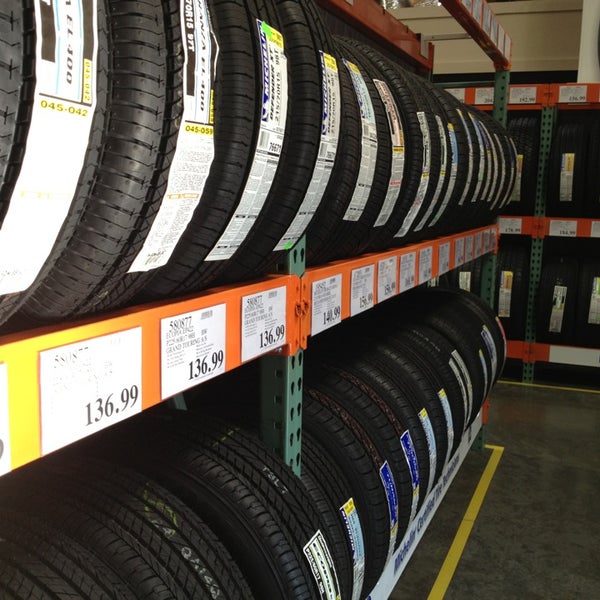Balancing means compensating for both the weight of the tire and wheel after the tire is mounted. A wheel is out of balance when one area is heavier or lighter than the rest. This can cause eccentric tread wear, vibration, and increase the stress on the front-end parts and may cause them to wear prematurely.
You should have your wheels balanced whenever a tire is replaced, when a balance weight is moved or removed, and whenever you purchase new tires. Of course, at the first sign of vibration or irregular tread wear, your car should be thoroughly checked for wheel balance and alignment, and for worn or broken mechanical parts.
To balance the wheel, your mechanic will use a balancing machine to determine where the heavy spots are. Weights are then attached to the exterior or interior of the wheel to counteract centrifugal forces acting on the heavy areas when the wheel is turning. This will eliminate vertical bouncing (static balance) and side-to-side wobble (dynamic balance).
Regular rotation helps extend the life of your tires, saving time and money in the long run. For rotation, each tire and wheel is removed from your vehicle and moved to a different position. This ensures that all of the tires wear evenly and last longer. If no period is specified in your vehicle owner's manual, tires should be rotated every 10,000 km to 12,000 km. If you have a full-size spare, it should be included in the rotation process.
Alignment generally refers to the adjustment of a vehicle's front and rear suspension parts. Proper alignment ensures that your vehicle handles correctly and will help increase the life and performance of your tires.
The alignment of your vehicle can be knocked out of adjustment from daily impacts such as potholes and railroad crossings or by more severe accidents.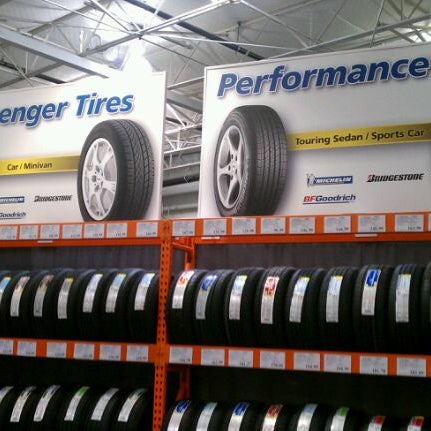 You should have the alignment checked if:
You should have the alignment checked if:
Alignment involves adjusting the angles of the wheels so that they are parallel to each other and perpendicular to the ground. The three main adjustments made in alignment are Camber, Caster, and Toe.
Camber is the angle of the wheel, in degrees, when viewed from the front of the vehicle. Positive camber is when the top of the wheel is leaning out from the center of the car. Negative camber is when the top of the wheel is leaning into the car. If the wheel leans too far from the center, uneven wear will occur. The camber angle is designed and adjusted per vehicle to keep the tires on the outside of a curve flat on the ground during a turn. If you have too much positive camber, your tires will wear on the outside.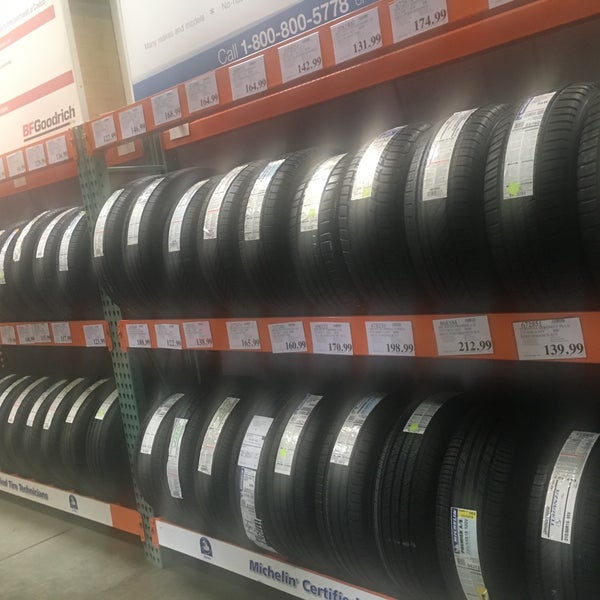 Too much negative camber will wear them on the inside. If there is too much of a difference between the camber settings on the front wheels, the vehicle will tend to pull sharply to one side.
Too much negative camber will wear them on the inside. If there is too much of a difference between the camber settings on the front wheels, the vehicle will tend to pull sharply to one side.
Caster is the forward or rearward tilt of the steering axis, measured from the top of the tire as viewed from the side. The axis is formed by extending an imaginary line through the upper and lower steering knuckles. The line extends through the upper and lower ball joints on vehicles with front control arms, and through the lower ball joint to the center of the strut mount on cars with struts.
If the angle is towards the rear of the vehicle, the wheel has positive caster. If the angle is too far to the front of the vehicle, the wheel has negative caster.
Caster is set so that your car will tend to go straight ahead. Positive caster has the effect of making your front wheels act as if your car was being pulled from the front so that they will line up behind the point of pull, like a child's pull toy.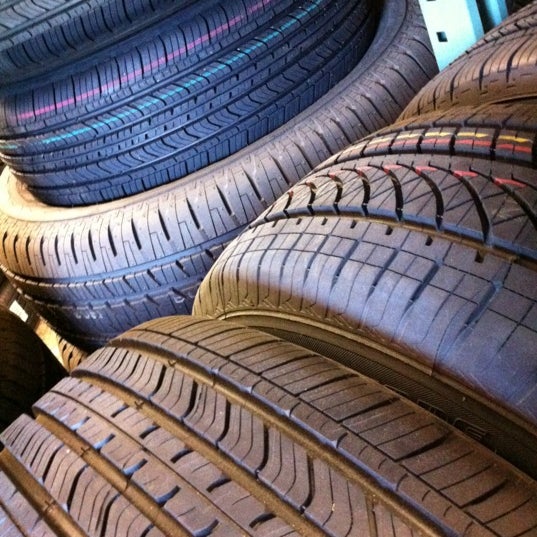
Another example is the caster wheel found on furniture or on some shopping carts. When you push a shopping cart equipped with caster wheels, it tends to roll in a straight line because the wheels line up or trail behind the point of pull. The greater the trail distance, the greater the tendency to roll straight ahead. The caster setting on a vehicle is adjustable in order to increase or decrease the effective trail distance.
Caster affects your vehicle's low-speed steering, high-speed stability as well as how well your vehicle drives in a straight line (on-center feel). Too little caster will cause your car to "wander" and make it feel unstable at high speeds. Too much caster causes hard steering and can also result in excessive road shock and shimmy. Caster does not affect tire wear.
Toe is the difference in the distance between the front of the tires and the back of the tires. Usually, tires are set so that they are parallel with each other. If the fronts of the tires are closer, the wheels are toe-in. If the rears of the tires are closer, the wheels are toe-out.
If the rears of the tires are closer, the wheels are toe-out.
Toe settings affect the handling characteristics of a vehicle in turns. Toe-in introduces Understeer going into a curve and may make the vehicle feel like the back end is trying to come around to the front end. Toe-out introduces Oversteer in a curve and makes the vehicle feel like it is "diving" into the turn too sharply.
If the tires are toed-in too much, the tread will be "worn" off, starting from the outside edges. If they are toed-out, the wear will start from the inside. This type of wear is called "feathering" and can be felt by running your hands across the tread of the tire.
Keeping your tires properly inflated is essential for the proper performance and longevity of the tire. Not to mention, the ride quality and safety of your vehicle. Your tires carry the entire weight of your vehicle. When underinflated or overinflated, they cannot do their job properly. Operating your tires underinflated can also result in sudden tire failure.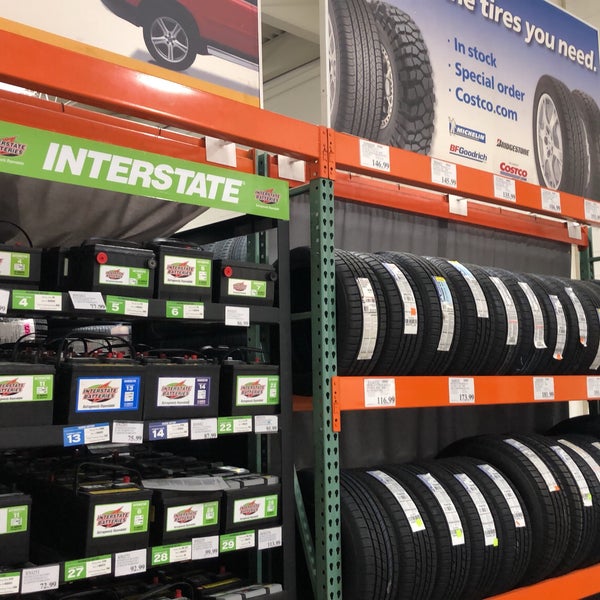
We recommend checking air pressure once a month, and before a long trip. Whether you have a full-sized or mini-spare, make sure that it is properly inflated as well.
Always inflate your tires to the recommended pressure listed by your vehicle's manufacturer. This information can be found in the owner's manual and often on a placard located in the vehicle's door jamb, inside the fuel hatch, or on the glove compartment door.
Air expands when it's hot and contracts when it's cold. For accurate pressure, always check the pressure when the tires are "cold" - at least three hours after the vehicle has been stopped and before it has been driven one mile. It's best to inflate your tires in the morning before the day's heat.
For example, it is possible for a passenger tire initially inflated to 35 psi to lose 1/2 psi per month. A substantial, seasonal temperature change can also affect inflation pressure, with cold ambient temperatures causing effectively lower air pressure.
The tire's valve is a very important maintenance item in terms of keeping the inflation air in your tires. These valves are ordinarily rubber, can deteriorate over time, and should be replaced when you buy new tires. At high speeds, a cracked, deteriorated rubber valve stem can bend from centrifugal force and allow air loss.
The valve cap is likewise an important item. Buy some good quality valve caps that can contain the inflation air should the core of the valve fail for any reason. Valve caps also keep out moisture, which could freeze and in turn depress the valve core, causing loss of air. The cap also keeps out dust and dirt particles, which could also interfere with the proper operation of the valve core and cause loss of air.
Purchase a good pressure gauge and check it for accuracy with your tire dealer.
Beware of public gauges at the gas station. They are often abused and unreliable.
The final decision to install a tire on a vehicle will be made by the Costco tire center manager or supervisor.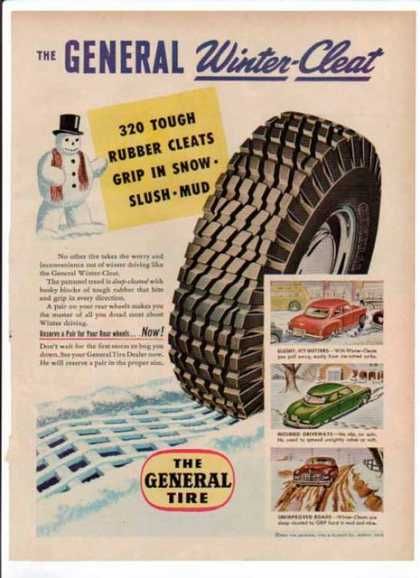 The tire must meet all vehicle manufacturers’ safety standards and specifications.
The tire must meet all vehicle manufacturers’ safety standards and specifications.
Back to Top
Wearing away by scraping, rubbing or impact. The progressive wearing away of a tire in service.
Deterioration of physical and chemical properties of rubber by oxidation over a period of time.
The amount of air inside the tire pressing outward on each square inch of tire; expressed in pounds per square inch (psi) or kiloPascals (kPa), the metric designation for air pressure (6.9 kPa = 1 psi).
The state in which all wheels on a vehicle are pointed in the optimum direction relative to the road and each other.
A tire with a tread design and tread compound that gives better traction in mud and/or snow. A tire that is designated All Season must meet specified RMA (Rubber Manufacturers Association) criteria. All Season tires carry one of the following designations on the sidewall M+S, M&S, or M/S.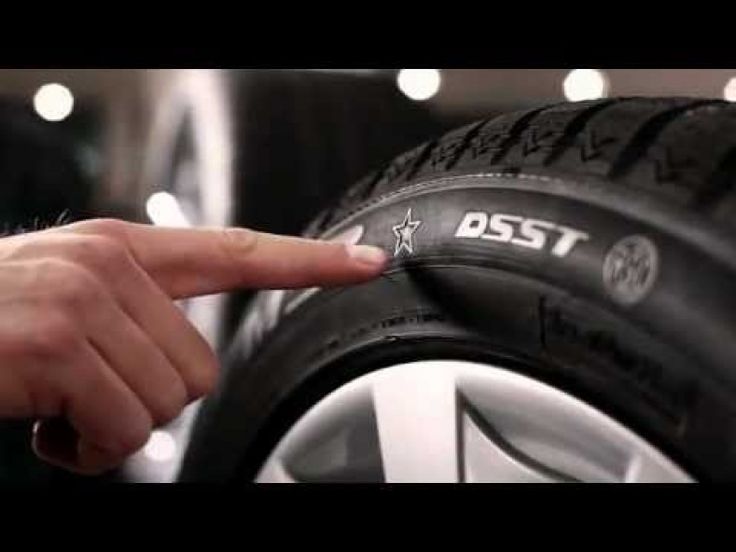
A term for describing the size of a tire in which both letters of the alphabet and numbers are used.
A substance added to rubber to delay aging due to ozone.
A substance added to rubber to delay aging by oxidation.
A synthetic fabric used in some tires that is (pound-for-pound) stronger than steel.
The relationship of a tires section height to its section width, expressed as a number that represents the nominal percent the tires section height is of its section width. Section Height Section Width x 100
The state in which a tire and wheel spin with all their weight distributed equally.
A round hoop of steel wires that is shaped to fit the rim around which the tires body plies are wrapped and which serves to hold the tire onto the rim.
A rubber-coated layer of cords that is located between the body plies and the tread rubber.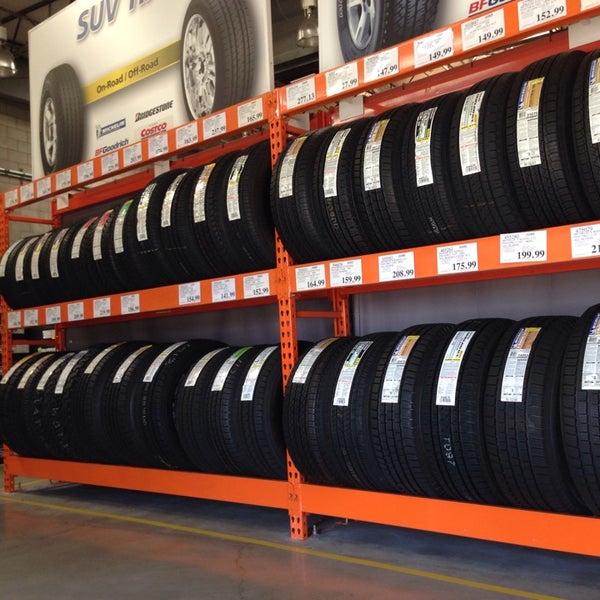 Cords may be made from steel, fibreglass, rayon, nylon, polyester or other fabrics.
Cords may be made from steel, fibreglass, rayon, nylon, polyester or other fabrics.
A pneumatic tire with a body similar to that of bias ply tires, but which also includes two or more belts under the tread.
A pneumatic tire in which the plies are laid at alternate angles less than 90 degrees to the center line of the tread. Plies usually run at angles of about 30-40 degrees relative to the tire centerline in a criss-cross fashion.
Releasing air to reduce pressure in tire.
Surface irregularity or imperfection.
A separation within sidewall or liner stock, or a separation between sidewall carcass or liner and carcass.
Tire structure excepting tread and sidewall rubber.
Condition in which the suspended body and frame hit together because of weak shock absorbers.
An injury to a tire, weakening, breaking or separating cords in the carcass without cutting or tearing of surface rubber.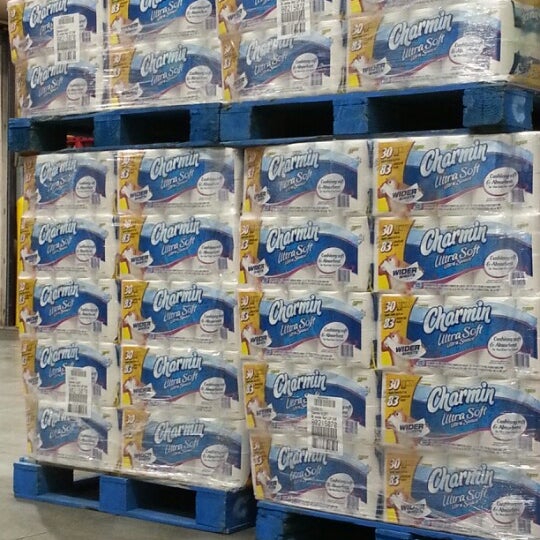
Inward or outward tilt of front wheels; inwards at top is negative camber. Under the condition known as positive camber both wheels slant inward at the bottom. Under this condition wheels will roll freely, but excessive wear will be produced on the outer shoulder of the tire tread. Steering and control will be difficult.
A general name for various forms of carbon, used as compounding ingredients in rubber.
The tire body beneath the tread and sidewalls; also called casing.
Maximum rated tire load as established by the Tire and Rim Association.
See Carcass.
Backward or forward placement of an axle, locating center of weight ahead or behind the ground contact point of wheel. Caster determines ease of steering and stability at high speeds. In passenger cars, caster is determined by the relative position of the upper ball joint (forward or rearward) in relation to the lower ball joint and is measured in degrees.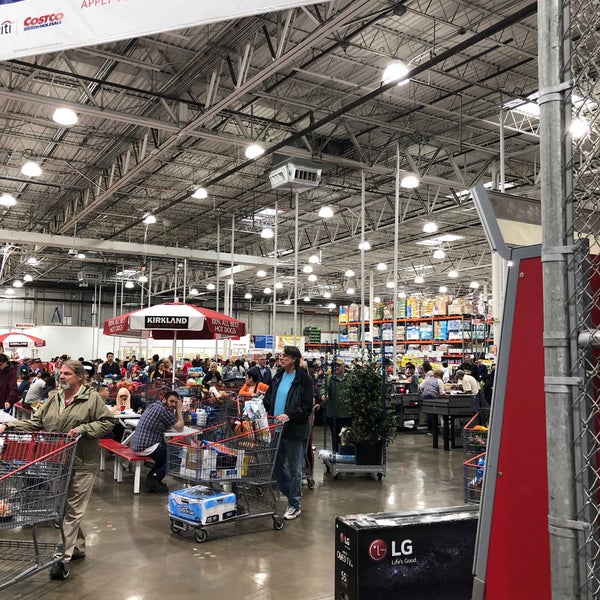
Minute cracking in surface of rubber caused by aging and oxidation.
Tearing or breaking away pieces of tread rubber.
Cracks in a tire running parallel to beads. Usually consists of cracks in the grooves of the tread.
The amount of air pressure in a tire, measured at ambient temperature before a tire has built up heat from driving.
Indicates the tires ability to minimize road noise, harshness, and vibration as perceived by the vehicle occupants.
The strands of material forming the body plies or belt plies of the tire. Cords may be made from aramid, fibreglass, rayon, nylon, polyester or steel.
Splitting in grooves caused by excessive strain.
External sidewall-to-sidewall measure of tire exclusive of ribs. Also called Section Width.
Section between shoulders of the tires.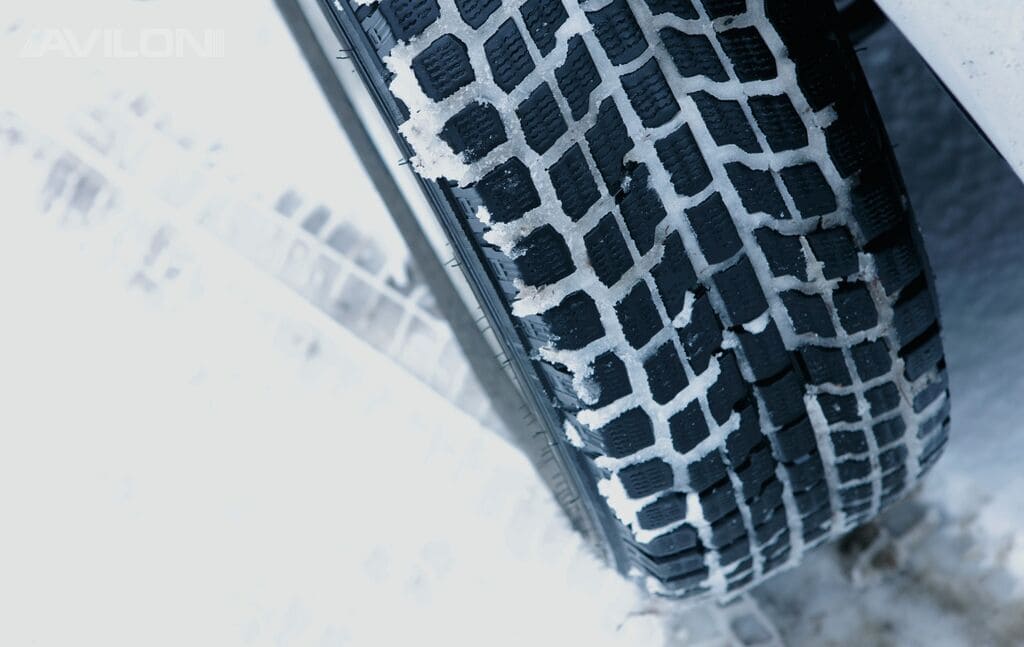
The measurement of the curvature of a tire tread between the shoulders of the tire. Expressed as a percentage, it indicates the relative flatness of the tire tread area.
Abrasion of shoulder and sidewall of tire caused by rubbing against curb as in parking.
Process of heating or otherwise treating a rubber or plastic compound to convert it from a thermoplastic or fluid material into the solid, relatively heat-insensitive state desired in the commercial product. When heating is employed, the process is called vulcanization.
A tire's free radius minus its loaded radius.
Department of Transportation.
A code molded into the sidewall of a tire signifying that the tire complies with U.S. Department of Transportation safety standards. The DOT code includes an alphanumeric designator, which can also identify the tires manufacturer, production plant, and date of production and brand.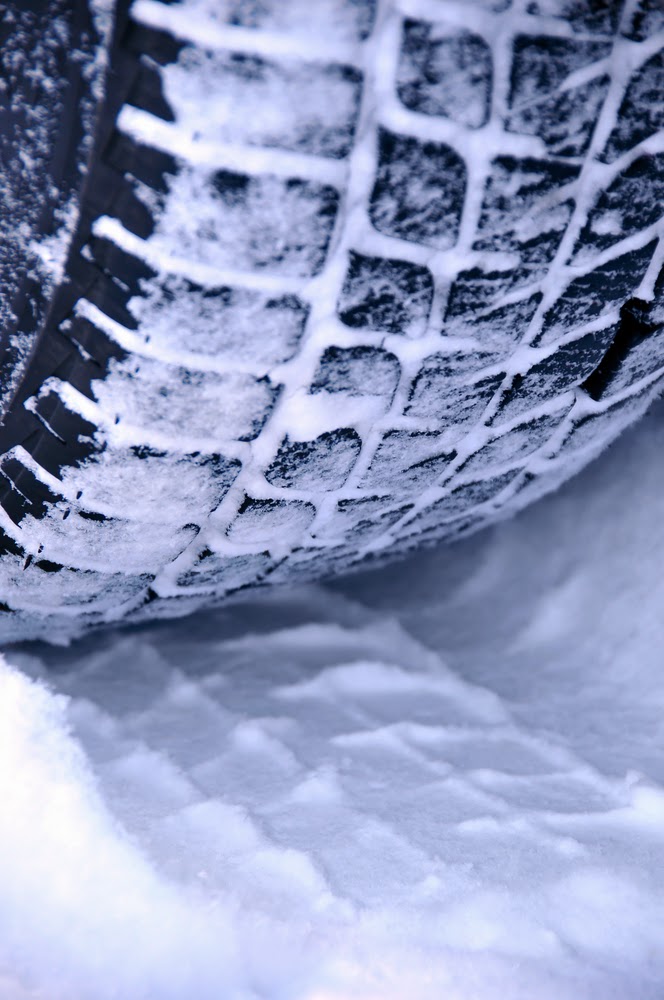
Tread design in which performance is dependent upon direction of rotation.
The intermittent contact of tires in dual as they flex due to inadequate dual spacing or overload.
A measurement, in inches, from the center of the tread of one tire to the center of the tread of the other tire in dual which provides clearance between duals for air circulation.
A device to measure the hardness of rubber. The term is also applied to the readings obtained with this device: for example, a tire tread may be defined as 60 durometer, which means that it shows this degree of hardness when tested with the durometer.
Balancing of tire while rotating.
Sharp, knifelike feathering along one edge of rib or blocks, due to scrubbing action of misaligned wheel on road.
Vertical collar of rim which retains outer edges of beads.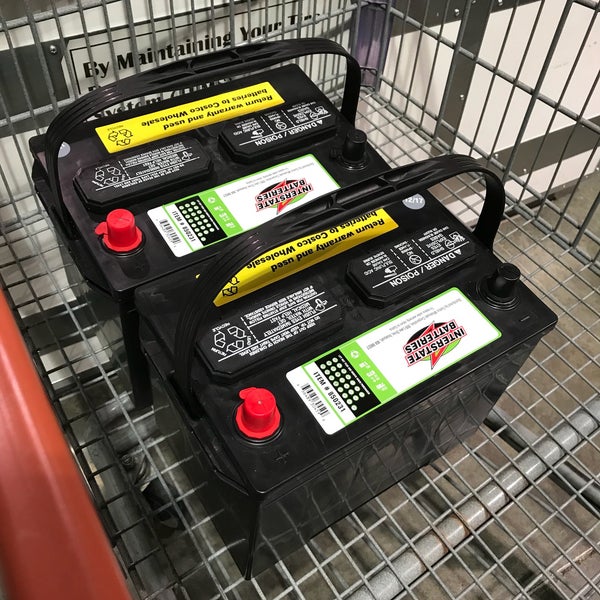
A rubber protector used in tube type tires to prevent injury to the tube by the bead toes and at the valve slot of the rim.
Irregular wear in an isolated spot or spots around the tire tread. Flat spotting can also result from abrasion of the tire resulting from brake lock.
Tread with very slight curve from shoulder to shoulder.
Repeated bending from original shape.
Circumferential line in tire where maximum bending or flexing occurs.
Ability of a tire to support a load on soft, yielding terrain.
That portion of the tread in contact with the road.
The radius of the tire/wheel assembly that is not deflected under load.
The force between the tires and the road surface which causes the tire to grip the road.
Abnormal side-to-side vibration of front wheels.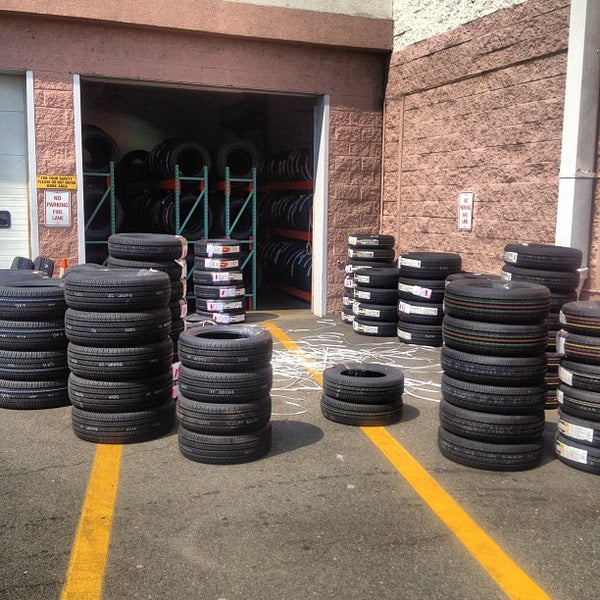
Abnormal up-and-down vibration of front wheels mostly at high speeds.
Chisel-like action of rocks or stubble on tires.
The space between two adjacent tread ribs or blocks; also called tread grooves.
Tire performance and "grip" on the road.
In tire testing on an automobile, the degree to which small road irregularities are absorbed by the tires. An improvement in harshness is apparent to the driver by a reduction in the shocks or vibrations transmitted to him.
Increase in heat of tire while in use in excess of heat dissipated.
Removal of heat from a tire by conduction, convection and radiation from the surface.
Sloping wear between ends of some tread elements (ripsaw-toothlike) shifting movement of tread units in contact with road.
Also called summer tires; designed for wet-and-dry weather driving, but not for use on snow and ice.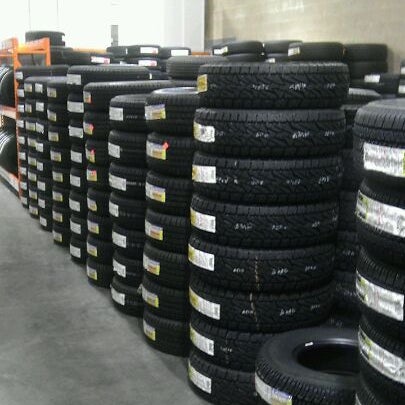
A skimming effect caused by tires losing contact with a surface covered with water when travelling at speed.
Rupture in tire carcass due to sudden shock.
Ability of tire to withstand injury from sudden shock.
The innermost layer of a tubeless tire. The innerliner prevents air from permeating through the tire.
(kPa) The metric unit for air pressure. There are 6.9 kPas to one psi.
(SEE INNER LINER)
Maximum load for which tire is designed under standard conditions.
Distance from wheel axis of rotation to supporting surface at a given load and stated inflation pressure.
The loaded radius minus half of the nominal rim diameter. Distance from rim seat to outer tread surface of a loaded tire.
An assigned number ranging from 0 to 279 that corresponds to the load carrying capacity of a tire.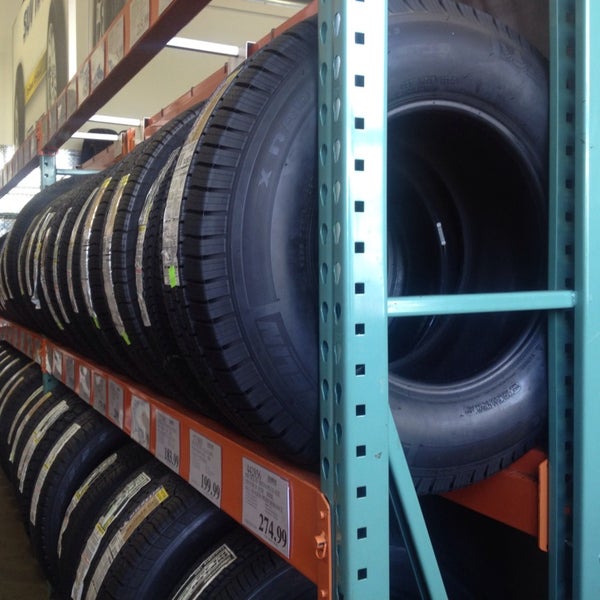
A system of designations which identifies the carrying capacity range of a tire. These markings shown on the tire indicate the ply rating established for the tire. Passenger tire designations are B (4-ply rating), C (6-ply rating), and D (8-ply rating).
A tire in which the cross-section has a squat appearance. Low profile refers to the fact that the tire's cross-section height is less than 80% -85% of the section width.
The maximum air pressure to which a cold tire may be inflated; found molded onto the sidewall.
Maximum outside cross-sectional width of inflated tire without load, including sidewall, rib, and decorations.
Greatest load for which vehicle or tire is built.
Maladjustment of one or more parts of steering mechanism, causing unsatisfactory operation of wheels and vehicle.
The heated cavity in which tires are vulcanized.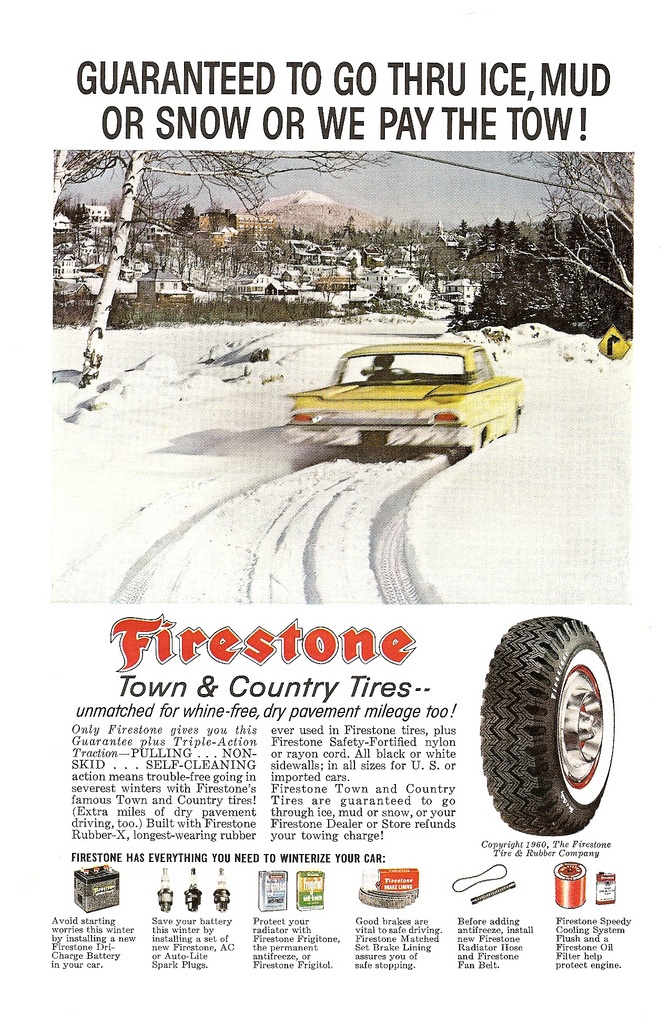
A tire made with only one casing ply.
Manufacturers Suggested Retail Price. Actual retail prices may vary. Please contact your nearest dealers for pricing in your area.
Tire performance in mud.
The diameter of rim seat supporting the tire bead. Examples 13", 15" and 16.5". This measurement is taken where the tire seats on the rim.
Tread design which is equally effective in either direction of rotation.
National Tire Dealers and Retreaders Association.
Indicates the tires ability to provide grip and traction for starts and stops in off-road conditions such as mud, turf, etc.
Refers to tires sold to vehicle manufacturers for use in equipping their manufactured units. The tire size recommended by the vehicle manufacturer.
The outside diameter of the inflated tire, without any load.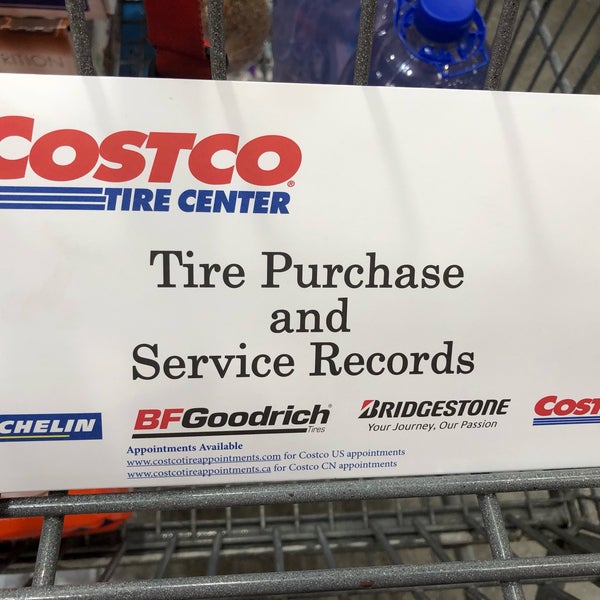
A summary based on a weighted average of how industry experts feel each tire would perform in individual attribute tests. These attributes were determined by a third-party industry-wide survey.
The distance between the outside of the two sidewalls, including lettering and designs.
Tire inflation above recommended pressure.
Excessive tire bending or distortion, due to too great load or insufficient air pressure (or both).
A tire that is carrying weight that exceeds its rated capacity relative to its inflation pressure.
Mounting larger tires than size specified for a vehicle to support heavier loads or provide increased flotation.
The tendency of a vehicle to steer into a sharper turn than the driver intends, sometimes with a thrusting of the rear of the vehicle to the outside. Example a vehicle is said to have an oversteer condition during a turn when the rear tires have less grip on the driving service than the front tires have.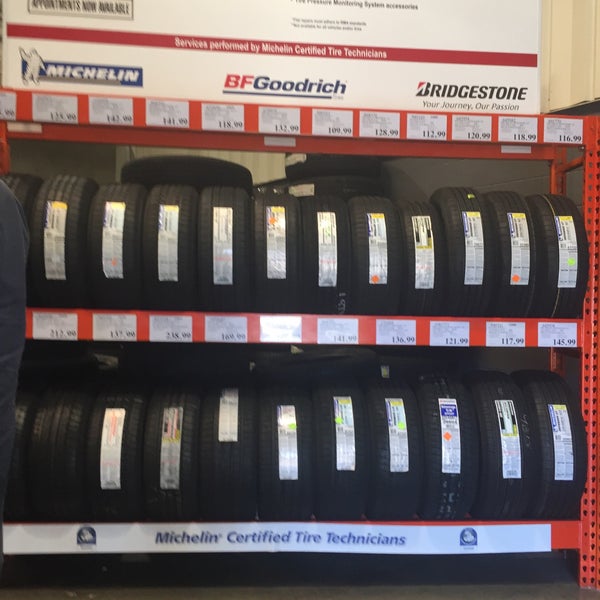 The tendency is for the rear of the vehicle to slide out toward the outside of the turn. Oversteer is also referred to by the term Loose.
The tendency is for the rear of the vehicle to slide out toward the outside of the turn. Oversteer is also referred to by the term Loose.
A form of oxygen molecules produced by electricity. Accelerates aging in tires.
Formation of fine cracks in surface of rubber due to ozone in air.
Indicates the extent to which the tire provides sharp response, strong dry traction, and well-balanced cornering grip to enhance a vehicles behavior in spirited driving.
A term which describes a tire that has small holes drilled into it to accommodate studs.
The filling of nail hole by forcing repair material into the damaged area to fill it, often while the tire is mounted and containing air. This form of repair is not satisfactory.
An option allowing drivers to customize their vehicle by mounting low-profile tires on wider rims of greater diameter, usually enhancing vehicle appearance, handling and performance.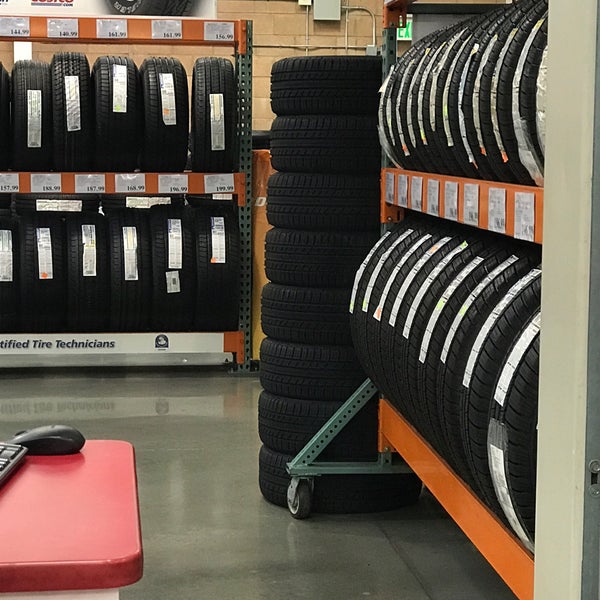
This term refers to replacing the original equipment tire with a wider and proportionately lower tire, without changing the wheels. Typically, this is the least expensive way to improve the look and handling of your car.
This fitment involves changing your tires and wheels. The "1" in "Plus 1" refers to fitting a wheel with a nominal rim diameter code one larger than the original. In this fitment, the proper tire will have a lower-aspect sidewall and may be wider. For example, you might go from an original tire of 185/70R14 to a 195/60R15 tire on a 15-inch rim diameter code.
This is a more exotic fitment, as it involves changing from your original size wheels to wheels having a nominal rim diameter two codes larger. Again, the tire will have a lower sidewall and may be wider.
A rubber coated layer of fabric containing cords that run parallel to each other; extends from bead to bead and is located between the inner liner and belts or tread.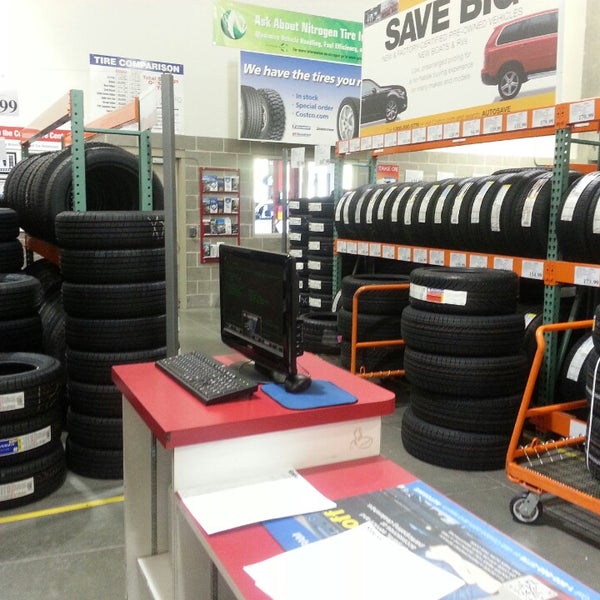
Strength of tire in terms of cotton ply strength. It need not indicate actual number of plies.
Uniform designation of tire sizes, in metric measurements originally introduced by American tire manufacturers in 1977; commonly called "P-metric series." A typical P-metric tire is P205/70R14 93S.
A tire filled with air (see Tire).
Increase of air pressure in tire caused by temperature rise of tire.
A special line of tires or tubes manufactured for and to the specifications of a private buyer.
Shoulder-to-shoulder arc of tread cross-section.
An abbreviation for pounds per square inch (psi). The amount of air inside a tire pressing outward on each square inch of tire is usually expressed in psi. Example: Front: 30 PSI Rear: 30 PSI. "It is important to have the proper air pressure in your tires, as under-inflation is the leading cause of tire failure.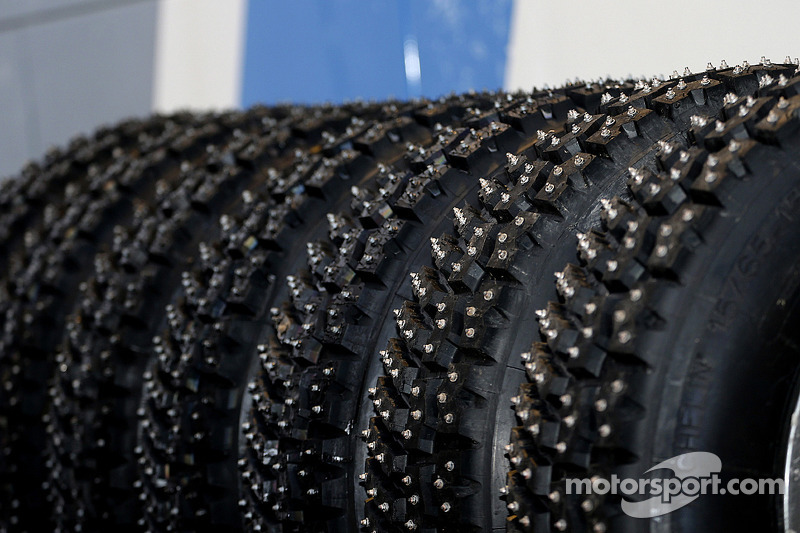 The correct air pressure for the tires on your vehicle is specified by the vehicle manufacture and is shown on the vehicle door edge, door post, glove box door, fuel door, or refer to your vehicle owner's manual."
The correct air pressure for the tires on your vehicle is specified by the vehicle manufacture and is shown on the vehicle door edge, door post, glove box door, fuel door, or refer to your vehicle owner's manual."
Any penetration of a tires air chamber by a foreign object, nail, glass, etc. resulting in the loss of air. Such loss can be rapid with the collapse of the innertube.
Tire performance with little or no noise.
Surface openings, generally in shoulder or sidewall of tire, running parallel to tire radius.
A type of tire with plies arranged so cords in the body run at 90-degree angles to the centerline of the tread.
In tires, a measure of out-of-roundness; tested by rotating the inflated tire and measuring how far the surface of the tread varies from a true circle.
Instantaneous rupturing of tire body, causing complete loss of air pressure.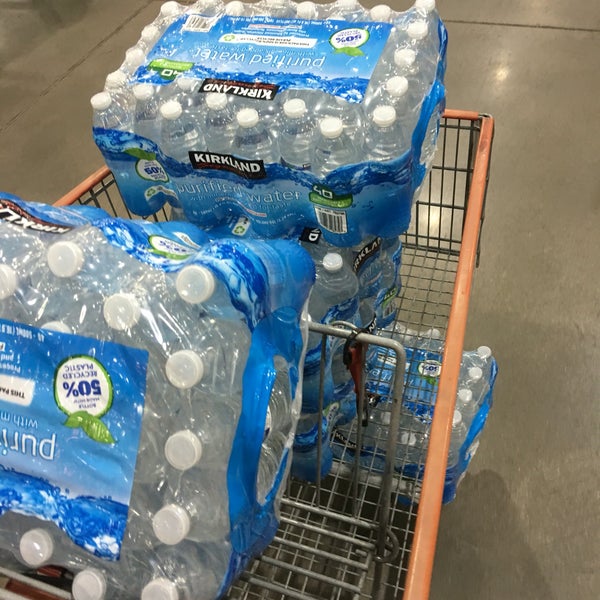
The maximum allowable load for a particular size and load range tire.
Any tire other than those sold as original equipment.
Excessive heating of a cured tire compound leading to deterioration of its physical properties.
Measured number of revolutions for a tire travelling one mile. This can vary with load and inflation.
Tread section running circumferentially around a tire.
A metal support for a tubeless tire or a tire and tube assembly upon which the tire beads are seated.
Damage caused when a tire hits an obstruction with sufficient force to compress the tire between rim flange and object.
Approximate diameter of the rim measured at the bottom of the flange (nominal). Bead seat diameter is the distance between intersections of bead seat line and heel line extended. True for passenger tires and most truck tires.
Raised sidewall rib to protect sidewall from curb scuffing. Also called buffing rib or scuffing rib.
The curved metal extremes of a rim that retain the tire on the rim base.
Distance between the two inside flanges of the rim (where the tire seats).
Rubber Manufacturers Association
Injury to a tire sustained in normal operation.
Impact of road irregularities transmitted through tires to vehicle.
A condition in which a rock has penetrated the tread rubber or fabric of a tire. Caused by the failure of tires to eject the rocks picked up by the grooves.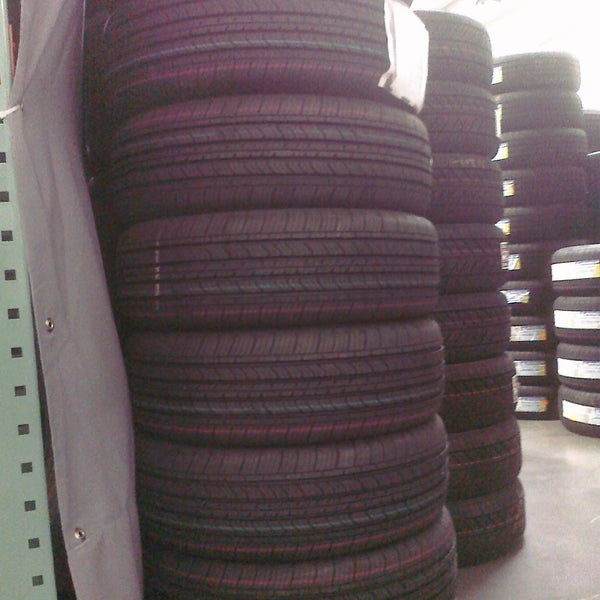
The linear distance traveled by a tire in one revolution. This can vary with load and inflation. Rolling circumference can be calculated as follows: 63,360 divided by revolutions per mile = rolling circumference in inches.
Distance from axle to road under any given condition of load, speed or inflation.
The force required to keep a tire moving at a uniform speed. The lower the rolling resistance, the less energy needed to keep a tire moving.
The changing of tires from front to rear or from side-to-side on a vehicle according to a set pattern; provides even treadwear.
Damage sustained by a tire due to operation with insufficient air pressure.
For best performance, it is recommended that the same size and type of tire be used on all four wheel positions. In certain tires, casing ply material and ply construction may vary as indicated on the sidewall of the tire.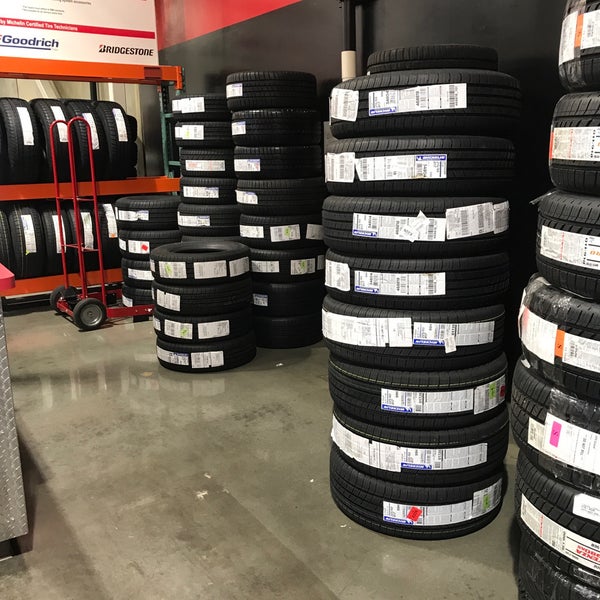 Before mixing different types of tires in any configuration on any vehicle,be sure to check the vehicle manufacturer's owner's manual for its recommendations.
Before mixing different types of tires in any configuration on any vehicle,be sure to check the vehicle manufacturer's owner's manual for its recommendations.
It is especially important to check the vehicle manufacturer's owner's manual when mixing, matching, or replacing tires on 4-wheel drive vehicles, as this may require special precautions. NOTE: Tires which meet the Rubber Manufacturers Association (RMA) definition of snow tires are marked M/S, M+S, or M&S. On such tires, this designation is molded into the sidewall. Tires without this notation are not recommended for snow driving. In severe winter conditions, the use of four (4) winter radial tires is recommended.
Portion of rim on which beads rest.
The height of the tire sidewall, measured from rim to the outer tread.
Linear distance between outside walls of an inflated tire without any load (exclusive of protruding side ribs and decorations).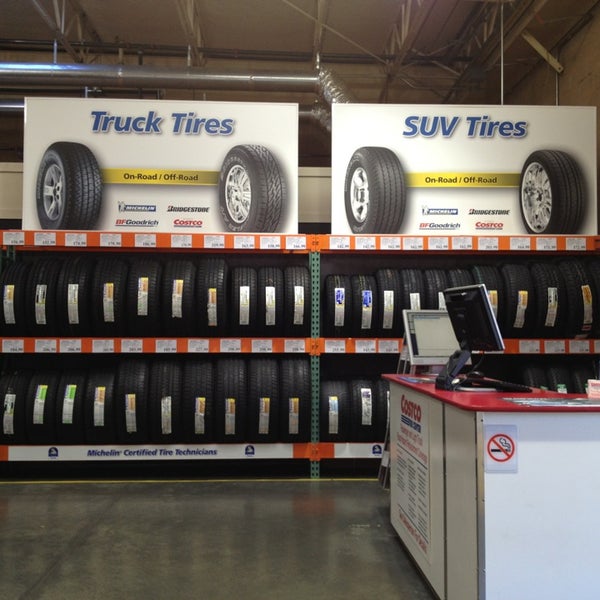
A unique construction, that in an event of pressure loss, will allow the tire to operate with little or no air pressure for a limited time.
Descriptive of a tire tread design to eject dirt and mud by natural flexing action of tire.
Tires with the same aspect ratio, or relationship of height to width inside the tire.
Wobbling of wheels from side-to-side on a vehicle. Shimmying can be caused by a variety of factors, including improperly balanced tires, poor alignment and bent wheels.
A fluid type cylinder which stops the car from bouncing after the initial shock has been absorbed by the spring. Most cars have four shock absorbers.
The area of a tire where the tread and sidewall meet.
That portion of a tire between the tread and the bead.
Special slits within a tread block that increase wet and snow traction.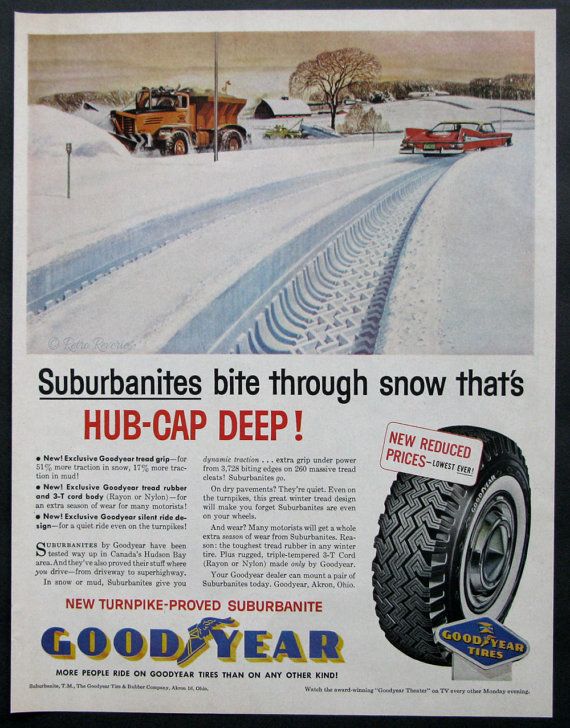 Sipes provide more biting edges and allow for the dispersion of water from under the tread surface.
Sipes provide more biting edges and allow for the dispersion of water from under the tread surface.
The combination of tire width, construction type, aspect ratio and rim size used in differentiating tires.
To slip or slide on the road when tires lose their rolling grip.
An angle formed by the direction of travel of a vehicle and the steered direction (that which the wheels are pointing). It is produced by distortions within the tire, due to external forces. Not to be confused by actual slipping or skidding.
An alphabetical code (A-Z) assigned to a tire indicating the range of speeds at which the tire can carry a load under specified service conditions.
Device for spreading beads of tire to examine or obtain access to inside.
The movement of a tires tread as it passes through the contraction cycle. Greatly reduced by belt systems and radial construction.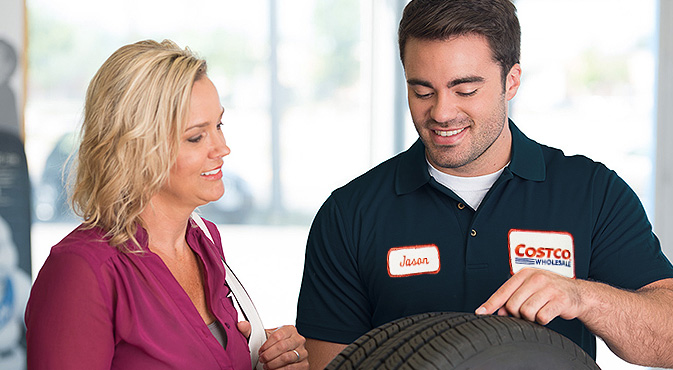
Ability of tires to maintain direction of vehicle on curve without causing excessive body sway.
State of balance in wheel when wheel is standing still.
Distance from center of wheel to ground on vehicle which has rated load, normal inflation, and is not in motion.
Wheel balancer used to check wheel balance of tire not in motion. Also known as a bubble balancer.
A radial tire made with steel belts as opposed to textile belts.
Indicates the tires ability to navigate the twists and turns of everyday driving conditions, as well as the ability to provide good "on-center" steering feel and true tracking for highway driving.
A hard metal or plastic rivet which is inserted into a pinned tire for the purpose of improving winter traction.
A precisely engineered assembly of rubber, chemicals, fabric and metal designed to provide traction, cushion road shock and carry a load under varying conditions.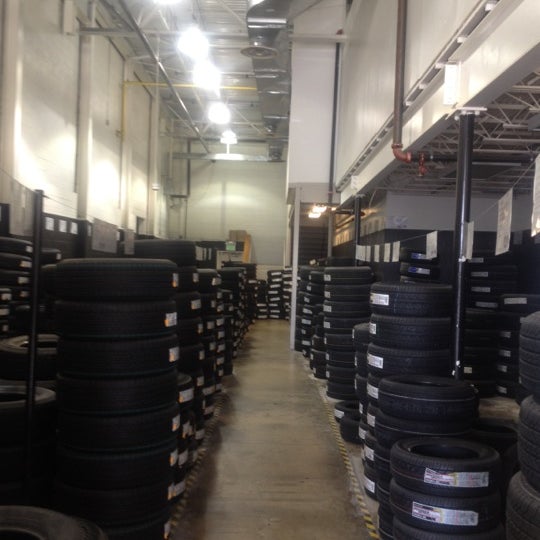
Adding external weights to compensate for unequal distribution of tire weight. A small metal weight clamped to rim is used to correct an unbalanced tire.
The basic attitudes through which a tire passes in the process of rotating on a car. There are three cycles, the normal cycle before road contact, the contraction cycle during road contact and the expansion cycle after road contact.
An alphanumeric code molded into the sidewall of the tire that describes the tires size, including width, aspect ratio, rim diameter, load index and speed rating. Most designations use the P-Metric system.
Adjustment of front wheels so that they are closer together at the front than at the back. All wheels are set this way when new vehicle leaves the plant. Slight toe-in eliminates tendency of wheels to weave from side to side. All wheels should toe-in slightly. However, too much toe-in creates very heavy wear on the outer shoulder of the tire.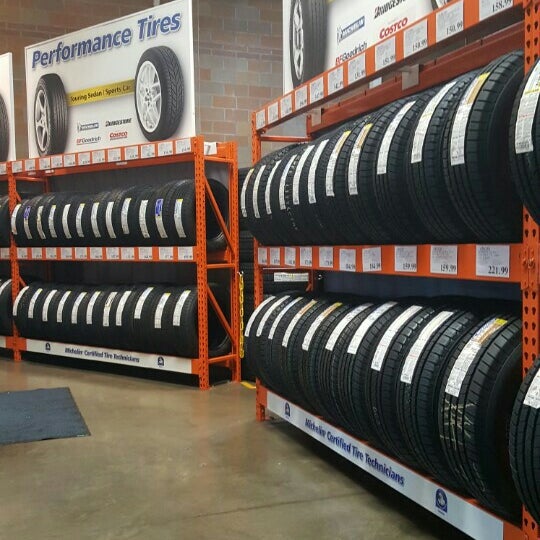
Alignment of wheels so that they are closer together at back than at front. This condition creates excessive wear and should be corrected.
The grip or friction, pull or bite between the tires and the road surface. Traction grades range from AA, A, B, C, with AA being the highest attainable grade.
A state in which a vehicle bounces up and down abnormally.
That portion of a tire that comes into contact with the road. It is distinguished by its tread design and rubber compound.
The distance in thirty-seconds of an inch measured from the tread surface to the bottom of the grooves in a tire.
The pattern of the tread.
The parts of the tread design which are separated from each other and made distinct by the sipes and rib or lug design molded into the tire.
Length of service in miles before tread wears out.
The tread section that runs around the circumference of the tire, separated by the tread grooves.
Expected durability of the tire tread.
Tread pulling away from body of tire.
Narrow bands, sometimes called "wear bars," that appear across the tread surface of the tire when only 2/32 inch of tread remains.
The portion of the tread design that comes in contact with the road.
The friction between the tires and the road surface; the amount of grip provided.
An airtight container placed inside tire casing to hold the compressed air.
Tuner dimensions are those with more of priority in aesthetics enhancement than true performance enhancement. Performance is still an important part of the equation, it's just second to aesthetics.
Insufficient air pressure in a tire for the amount of load carried.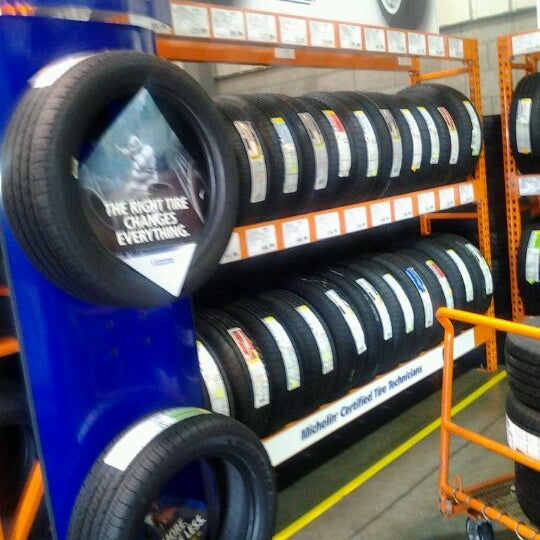
The tendency of a vehicle to turn less sharply than the driver intends or the reluctance of a vehicle to leave the straight path ahead while steering. Example - A vehicle is said to have an understeer condition during a turn when the front tires have less grip on the driving service than the rear tires have and the vehicle tends to follow a straight line regardless of steering input. Understeer is also referred to by the term push.
Tread material between bottom of antiskid grooves and carcass.
The Uniform Tire Quality Grading System (UTQGS) is a tire information system designed to help buyers make relative comparisons among tires. The UTQGS is not a safety rating and not a guarantee that a tire will last for a prescribed number of miles or perform in a certain way. It simply gives tire buyers additional information to combine with other considerations, such as price, brand loyalty and dealer recommendations.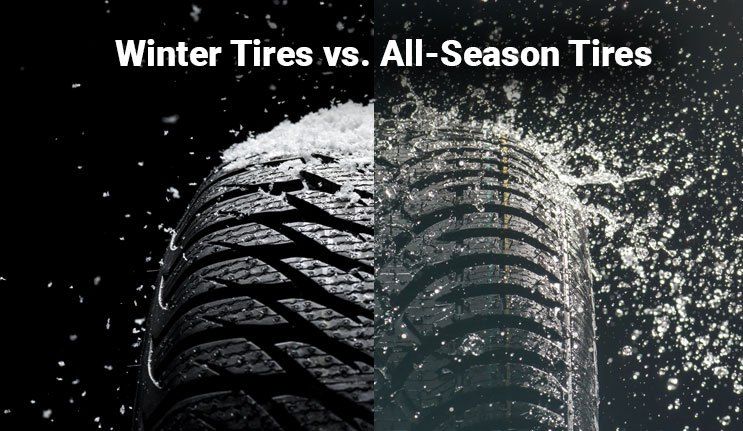 Under UTQGS, tires are graded by the manufacturers in three areas - Treadwear, Traction and Temperature Resistance.
Under UTQGS, tires are graded by the manufacturers in three areas - Treadwear, Traction and Temperature Resistance.
Treadwear
The treadwear grade is a comparative rating based on the wear rate of the tire when tested under carefully controlled conditions. For example, a tire graded 200 should have its useful tread last twice as long as a tire graded 100. However, real world tire tread life, in miles, depends on the actual conditions of their use. Tire life is affected by variations in driving habits, service practices...such as tire rotation, wheel alignment and maintaining proper inflation pressure...and differences in road characteristics and climate.
Traction
Traction grades represent the tire's ability to stop on wet pavement as measured under controlled conditions on asphalt and concrete test surfaces. The traction grades from highest to lowest, are "AA", "A", "B" and "C". A tire graded "AA" may have relatively better traction performance than a tire graded "A", "B" or "C", based on straight ahead braking tests.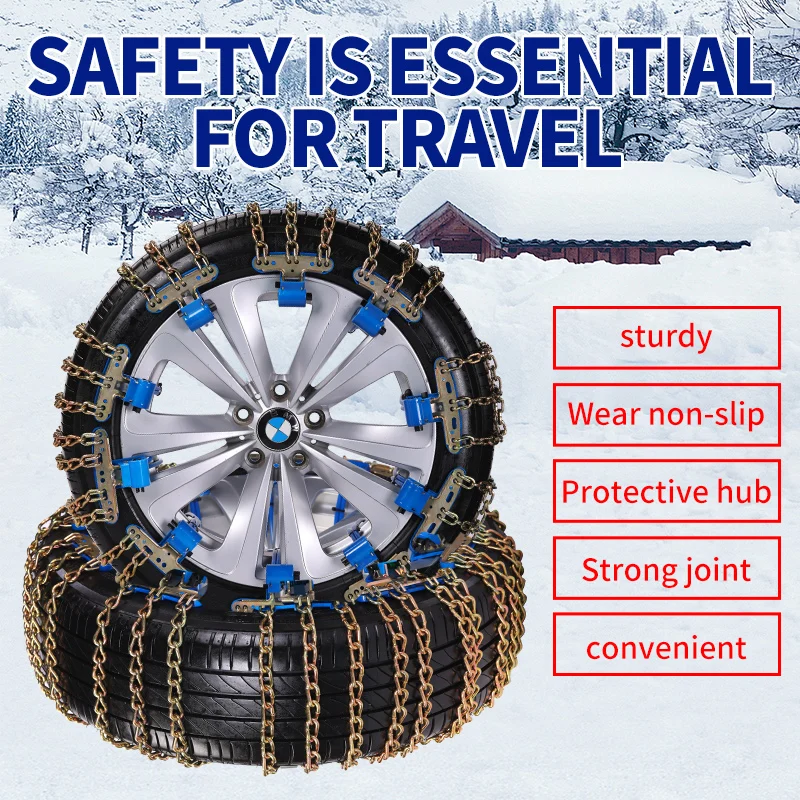 The grades do not reflect the cornering or turning traction performance of the tires.
The grades do not reflect the cornering or turning traction performance of the tires.
Temperature Resistance
Temperature grades represent the tire's resistance to heat and its ability to dissipate heat when tested under controlled laboratory test conditions. Sustained high temperature can cause the tire to degenerate and reduce tire life, and excessive temperature can lead to sudden tire failure. The temperature grades from highest to lowest are "A", "B" and "C". The grade "C" corresponds to the minimum performance required by federal safety standard. Grades "B" and "A" represent higher levels of performance than the minimum required by law. The temperature grade is for a tire that is inflated properly and not overloaded. Excessive speed, underinflation or excessive loading, either separately or in combination, can cause heat build-up and possible tire failure.The UTQGS information is right where you need it...on the tire. The grades can be found on two places on the tire: there is a paper label affixed to the tread, and the grades are also molded into the sidewalls.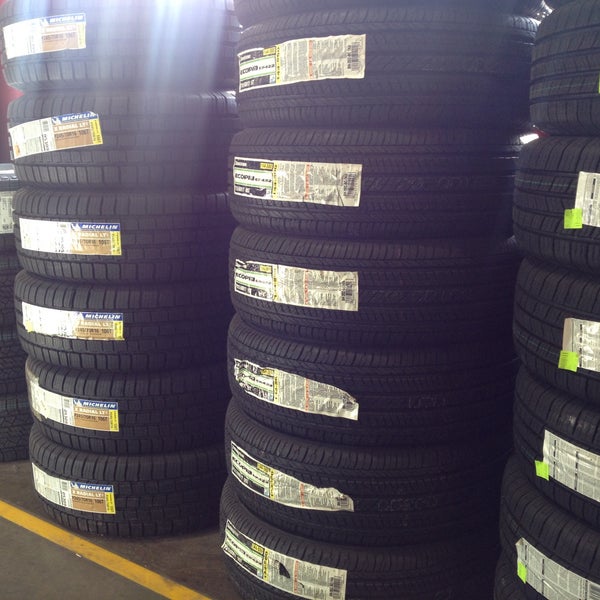
A device through which a tire is inflated. It includes a valve stem, valve core and valve cap.
Screw cover for end of valve stem. It is the primary air seal for the valve assembly.
A check valve which permits air pressure checks without undue loss of air pressure. The core should not be considered a valve seal.
Extra length added to valve stem for greater accessibility, particularly on inside duals.
Tube through which air flows in or out of tube.
A metal or paper tag permanently affixed to a vehicle which indicates the appropriate tire size and inflation pressures for the vehicle. Check the vehicle owner's manual for placement of the placard on the vehicle.
See Treadwear Indicator.
Fine hairline cracks in surface of rubber, caused by oxidation and other atmospheric effects.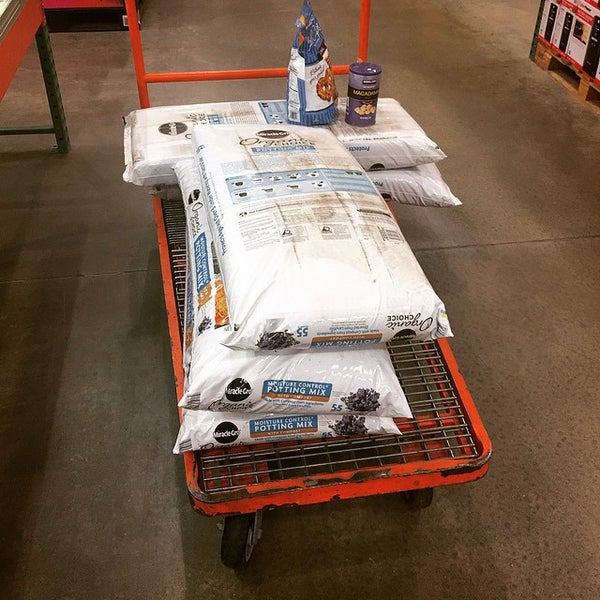
Weight given to the attribute in calculating the overall score.
Indicates how efficiently the tire disperses water to combat hydroplaning, and how well it grips wet roads in low-speed driving.
Adjustment of wheels for proper operation of vehicle.
Small metal weight clamped to rim to correct unbalanced tire and/or wheel.
Distance in inches between front and rear axles.
Sometimes called a snow tire; A tire with a tread design and tread compound designed specifically for operation in ice and snow. In 1999 the RMA (Rubber Manufacturers Association) introduced a new designation and symbol to differentiate between All Season and Snow or Winter tires. The new designation is SEVERE SNOW use tires. The symbol on such a tire is located on the sidewall adjacent to the M+S type designation.
That's how strange today's topic sounds :) In fact, there are two topics here, and they are basically far from each other, they're just small and that's why I decided to combine them in one article :) Both topics are from the category .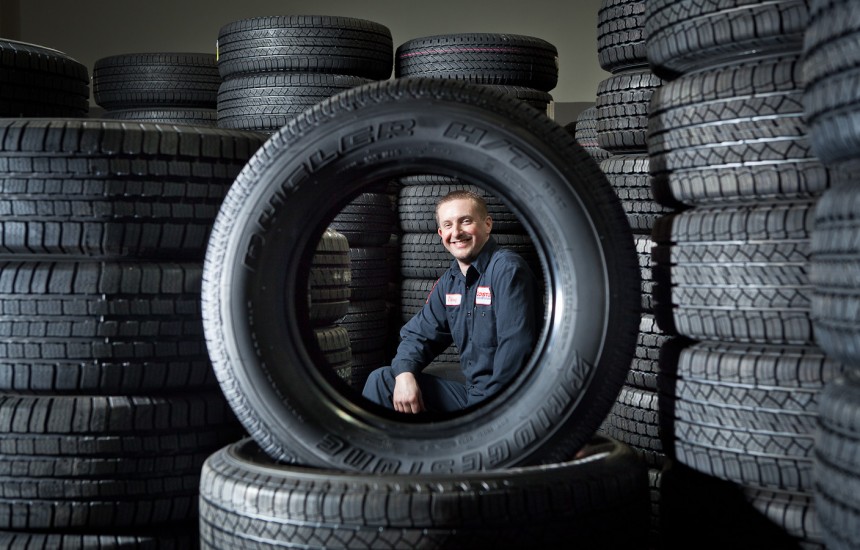 .. I tried yourself, share with others :) So, first about the pillows. Quite recently we tried to discuss the topic of mattresses, as well as bed linen, pillows, etc. Well, we haven't bought a new mattress with memory foam yet. But I finally made up my mind about pillows. I thought for a long time about which pillows to buy. There were three options: bamboo, eucalyptus (Tencel), or memory foam. Pillows, I must say, are very annoying. Maybe I really became picky in my old age :) The doctor said that in order for the body and spine to have a good rest during the night, the spine should lie, as it were, in the same plane, without bending.
.. I tried yourself, share with others :) So, first about the pillows. Quite recently we tried to discuss the topic of mattresses, as well as bed linen, pillows, etc. Well, we haven't bought a new mattress with memory foam yet. But I finally made up my mind about pillows. I thought for a long time about which pillows to buy. There were three options: bamboo, eucalyptus (Tencel), or memory foam. Pillows, I must say, are very annoying. Maybe I really became picky in my old age :) The doctor said that in order for the body and spine to have a good rest during the night, the spine should lie, as it were, in the same plane, without bending.
Therefore, only the ears should lie on the pillow :), and the shoulders (shoulder if you sleep on your side) should lie on the mattress. Since if you press the pillow with your shoulder, it will flatten and then an unsuccessful angle for the spine is formed.
Well, in general, I didn't like the pillows that I bought at all, and therefore I threw them away several times a year, testing different manufacturers and so on.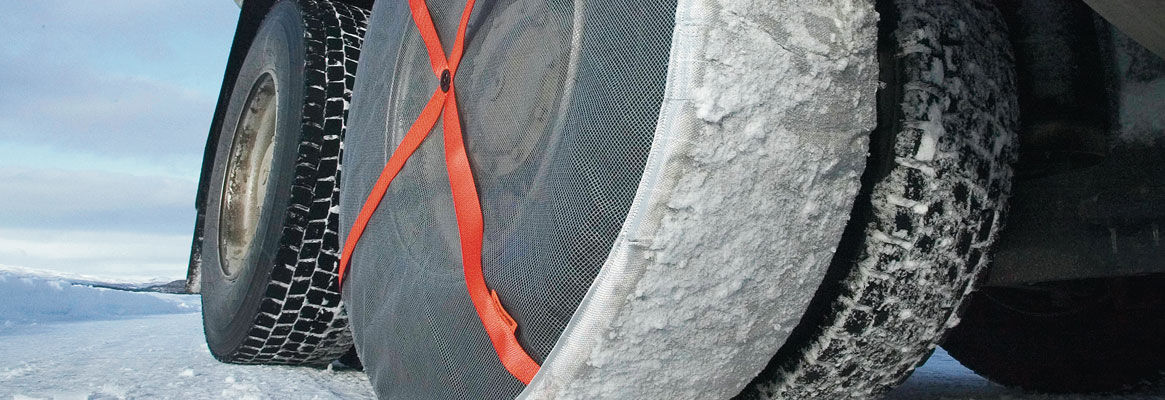 Because they were flattened to death in just a couple of weeks. And washing them did not help much to perk up again.
Because they were flattened to death in just a couple of weeks. And washing them did not help much to perk up again.
So I had a fear of bamboo and eucalyptus pillows, that they would also quickly flatten and make me uncomfortable again. After all, these pillows are basically exactly the same as ordinary pillows, just the stuffing material is more useful and environmentally friendly.
So I made a drastic move and bought memory foam pillows. But since I had no experience of sleeping on such pillows at all, I could not choose something specific from the huge variety of these pillows today. There are a lot of pillows, all different, quite expensive, and everyone shouts that they are the best. And I don’t know what my body thinks about this :)
So here I obeyed my toad, she choked me into buying an expensive pillow, which is not known how different from a cheaper one, and it is not known whether I would like to sleep on such pillows at all, and bought simpler pillows, lower-middle price category, and even and in Costco! I decided to test a simple pillow first and understand on it whether I like to sleep on such a pillow, and also whether I need any other bells and whistles in it or not.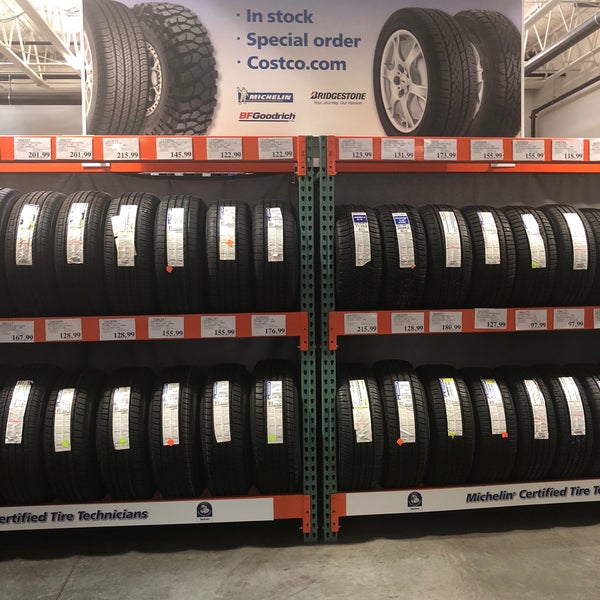
These pillows are not exactly simple, they even have a cooling layer and different densities, so in general it should be good. I have already read all sorts of recommendations on memory foam on the Internet, and it just said that this is generally a super modern material, but it has two jambs.
The first joint is that it is quite hot. That is, on a hot day or with powerful batteries, you can sweat :) Therefore, such a gel “cooling” layer is laid in high-quality mattresses and pillows, which removes this effect of overheating. And the second joint is the smell. A new mattress and pillow will smell for at least a couple of days. Which turned out to be pure truth :)
That's why we let our pillows lie open without us and they faded very quickly, now we almost don't feel the smell (although maybe because we're used to it :). In any case, as the manufacturers say, this smell is harmless and not nasty. I can’t say anything about the harmless, but it’s true about the harmless :) Although the taste and color with comrades are not super :)
Well, in Costco there was a choice of two pillows with the same filling and price, and they differed only in shape. One pillow is a classic rectangular shape, and the second one has a notch on one side, apparently so that the shoulder (or neck) fits comfortably there and does not pretend to fit on the pillow and thereby flatten it :)
One pillow is a classic rectangular shape, and the second one has a notch on one side, apparently so that the shoulder (or neck) fits comfortably there and does not pretend to fit on the pillow and thereby flatten it :)
whichever one I prefer, and I decided to try something, everything was completely new for me at once, and I took the one with a notch :) The pillow was inexpensive, something less than 30 bucks. By the way, these pillows cost more than a hundred bucks apiece.
Well, what can I say, we liked these pillows. Indeed, the recess in the pillow is very convenient for placing your shoulder there when you sleep on your side. The shoulder fits comfortably there, and the head rests on the pillow and has a lot of room to maneuver, because there is still a lot of room on both sides. And the spine is very classically laid perfectly flat.
Also, the elasticity of the pillow is very pleasing. It does not press through to the base, but keeps your head always on the same level.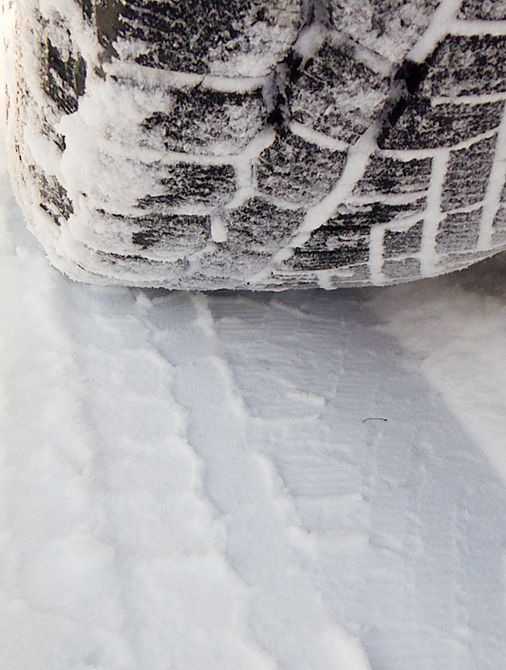 It is comfortable on both the ear, and the cheeks and everything else! :) Even if you bury your whole face in it, it is very comfortable :)
It is comfortable on both the ear, and the cheeks and everything else! :) Even if you bury your whole face in it, it is very comfortable :)
The head seems to be in weightlessness and you sleep like on a cloud :) By the way, this is noted by all people who sleep on memory foam mattresses, especially if the mattress is not the hardest. You do not feel your body at all, its weight and its curves. You're in a cloud :)
Maybe the cooling gel helps, or maybe it's not so hot here, but there is no heat or warming effect from the pillow, and therefore the head does not sweat and there are no unpleasant phenomena. And the cervical spine really felt better, there are no strains. Some positive emotions :)
So we will definitely take the next mattress with memory foam, well, when we take a mattress, then maybe we will take more abruptly pillows. Although these pillows from Costco have a 5-year warranty! For me, if they don’t flatten for at least half a year, then I will already pay back all the costs of pillows, because ordinary pillows had to be changed more often, and the amount for them per year was more than for these new pillows :) In general, I recommend that you try this too New, I hope you like it.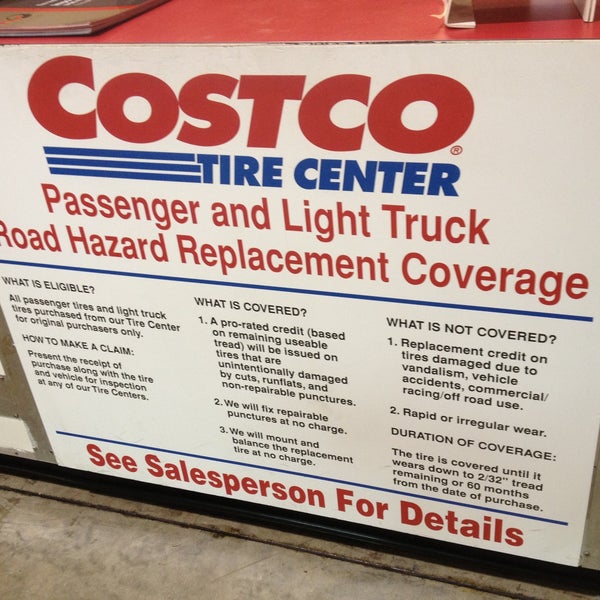
They say that such pillows are also good for allergy sufferers, because they do not collect dust, as well as to improve blood circulation and for deep sleep, and a comfortable rest in general. You can rummage around on the Internet yourself :) I think when these pillows are bundled with the same mattress, it will be generally super! But I'm not sure that the mattress should be taken in Costco, although there are very good prices for them. I still lean more towards Serta.
By the way, a stall has been opened in Chinook mall (on the way from Target to Nordstrom), where they started selling bamboo products. So far, these are pillows, bed linen and small towels. All this, of course, is very cool, especially bed linen, soft and silky, and so useful. But the prices are not healthy at all :)
Well, now, from the topic that I bought pillows in Costco and cheap mattresses there, let's move on to the topic of winter tires for the car, because in my opinion it is not bad in Costco, in anyway for the price :)
Since Seryoga does not care about cars and tires at all and he is indifferent to them, I had to deal with them myself. After all, I'm afraid to drive an expensive Odyssey in winter in any weather. So before, when there was quite bad winter weather, I could sit at home and not take risks once again, but now you can’t sit it out if you need to go to the airport to take Seryoga to or from work.
After all, I'm afraid to drive an expensive Odyssey in winter in any weather. So before, when there was quite bad winter weather, I could sit at home and not take risks once again, but now you can’t sit it out if you need to go to the airport to take Seryoga to or from work.
Therefore, I began to insist that winter tires would not hurt us :) And those who take the initiative should implement it. I had to start to understand the topic, such as wheel sizes, which tires are better or worse, and other details. And we still didn’t have simple wheels, but with TPMS (pressure sensors).
Of course, the easiest way was to go and put the wheels in a Honda dealership, but this procedure cost 1800 bucks, and somehow this figure was very annoying, like there were diamond wheels or something! Therefore, I began to look for cheaper, but high-quality options, they even called to find out how much such wheels cost in America. Like hit the road for a couple of days in Kalispel or Grand Falls in Honda's American dealerships and put everything there cheaper.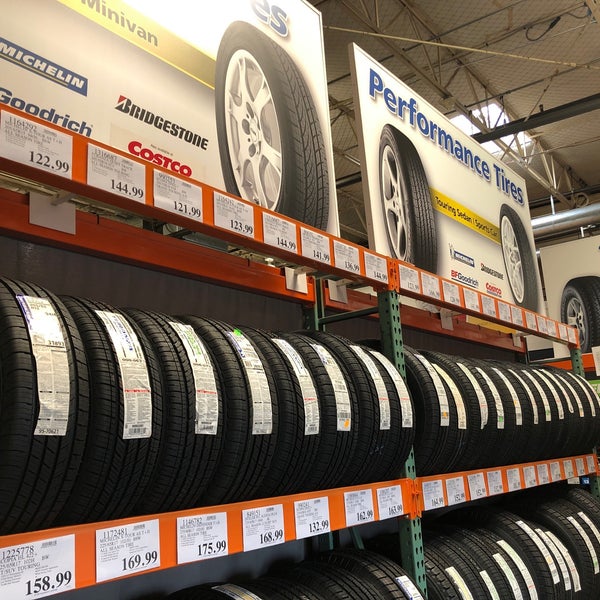
But the price showed that, of course, the wheels are cheaper there, but add to this the difference in the dollar exchange rate, gasoline, accommodation and food, and the price will be no less than in Calgary, so why fence the garden :) And then they can also at the border slap the tax, then this trip will be completely useless.
Well, after a lot of research, I turned my attention to Costco, and I liked their offer. They have good Michelin tires with discs, pressure sensors, and installation, as well as a lifetime (for rubber:) service cost about 1100 bucks, which, after the 1800 requested by Honda, seemed like a gift:)
The "lifetime for this rubber" service includes:
Mounting
Lifetime balancing
Lifetime rotation
Lifetime flat repair
Lifetime air pressure checks
New rubber valve stem
Nitrogen inflation
Costco Wholesale’s road hazard warranty
How do you experts in cars (probably much bigger than me, poor blonde woman:) think this is a good dil? Do any of our readers use this wheel service in Costco? Is it really convenient to use it and is it really all there for free?
Do you also put winter tires on your cars? And do you put it with rims or do you remount the wheels twice a year? What is more profitable? And how do you do all this, like you buy tires separately, separately disks in those places where it is as cheap as possible, and then you yourself or someone mounts it all for you, or go to a specialized company where you get everything from this office?
Probably not only me, but also our other readers who are not experts in cars and local specifics, we will be grateful to specialists and experienced car owners for your answers!
And one more small one, I don’t know if it’s a bonus or evil, but they say they sell cheap cigarettes in Costco :) We don’t smoke ourselves and therefore I don’t have buying experience, but I give you information from a person who is a heavy smoker and opened this business: ) He said that cigarettes are sold in an inconspicuous window at the entrance to the store (before you went to the trading floor, like in a dressing room).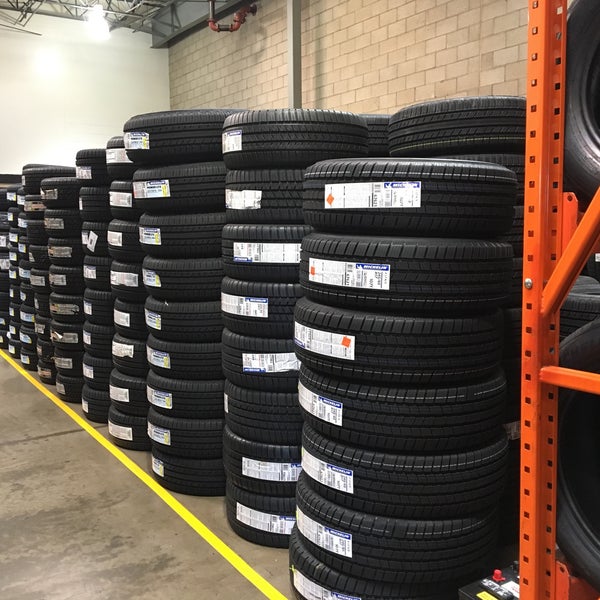 On the one hand, as you enter the dressing room of the store, you have the entrance to the car repair shop, then on the other hand, in an inconspicuous window without a sign, it turns out that they sell cigarettes :)
On the one hand, as you enter the dressing room of the store, you have the entrance to the car repair shop, then on the other hand, in an inconspicuous window without a sign, it turns out that they sell cigarettes :)
This entry was posted in What do you have?, Cars in Canada. From Hiroshima, Daily Life. Bookmark the permalink.
When we bought my car, the seller, a Chinese, repeatedly drew attention to how cool the tires are in the car, and that he only put them on a couple of months ago. Like, if the car was bad, I wouldn’t go broke on such.
I was skeptical about the claims, but after checking the sites, I found out that the tires are really good, and with a wheel diameter of 15 inches, the price of $ 140 for one all-season tire is not even small. This added bonus made me happy. Edward (that was the name of the seller) even left me receipts from Costco, where, in fact, he purchased the wheels.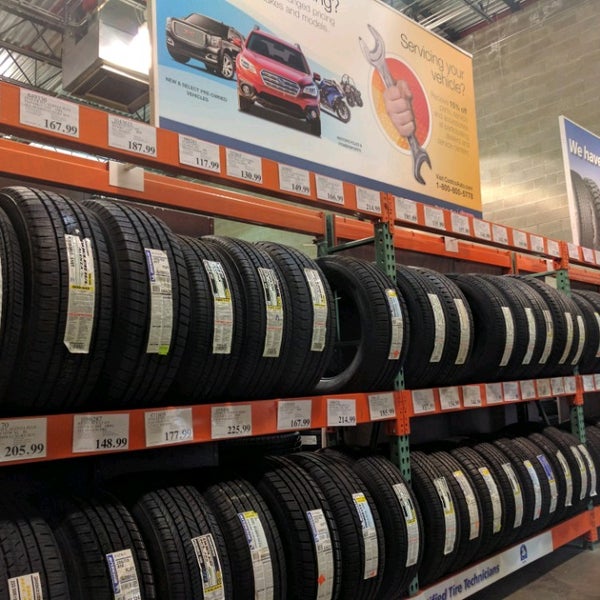 It was indicated there that the warranty for these tires was 100 thousand km. Great!
It was indicated there that the warranty for these tires was 100 thousand km. Great!
The car has been pleasing me for a year and a half, when suddenly, during the next oil change and seasonal diagnostics, it was discovered that there was a bulge on the tire. I did not know the term at that time, but the service said that the tire should be changed as soon as possible. I had my wheels rebuilt for winter according to the calendar in a week, but the masters could not guarantee that it was safe for me to drive even for such a short time. Everything worked out, and the winter tires were still installed a week later, and at the service, at my request, a mark was made on the damaged area with chalk.
During my next visit to Costco, I decided to find out what the tire warranty includes, if my case was covered, and where I should run. My case turned out to be under warranty, but the warranty did not follow the owner. That is, Edward himself had to contact Costco. Then I drooped, because I did not think that I still had his phone number.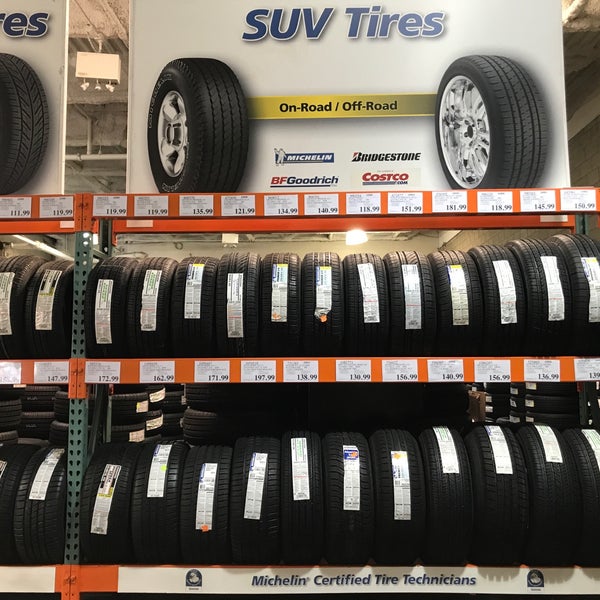 I forgot about the question for a couple of months. But there seemed to be a hidden process going on in my brain that prompted me to raise the Bill of Sale. There was also a phone number.
I forgot about the question for a couple of months. But there seemed to be a hidden process going on in my brain that prompted me to raise the Bill of Sale. There was also a phone number.
I called Edward, he quickly remembered me and relaxed when he learned that everything was fine with the car (after all, 2 years had already passed). He agreed to help, and after 3 days we met with him at the Costco tire department. Previously, I called there and made sure that they have these tires in stock, and you only need to bring a damaged copy and a purchase receipt. Immediately strained when we were asked if we had an appointment.
We were confused because we did not understand why: the tire is removed from the disk, it does not require any removal-installation. We were told that they have a queue, they need to fill out some documents, in general, come back in three hours (!!!). Here Edward demanded a manager. A girl came and began to explain again that we had to wait, but she called the waiting time 30 minutes to an hour.